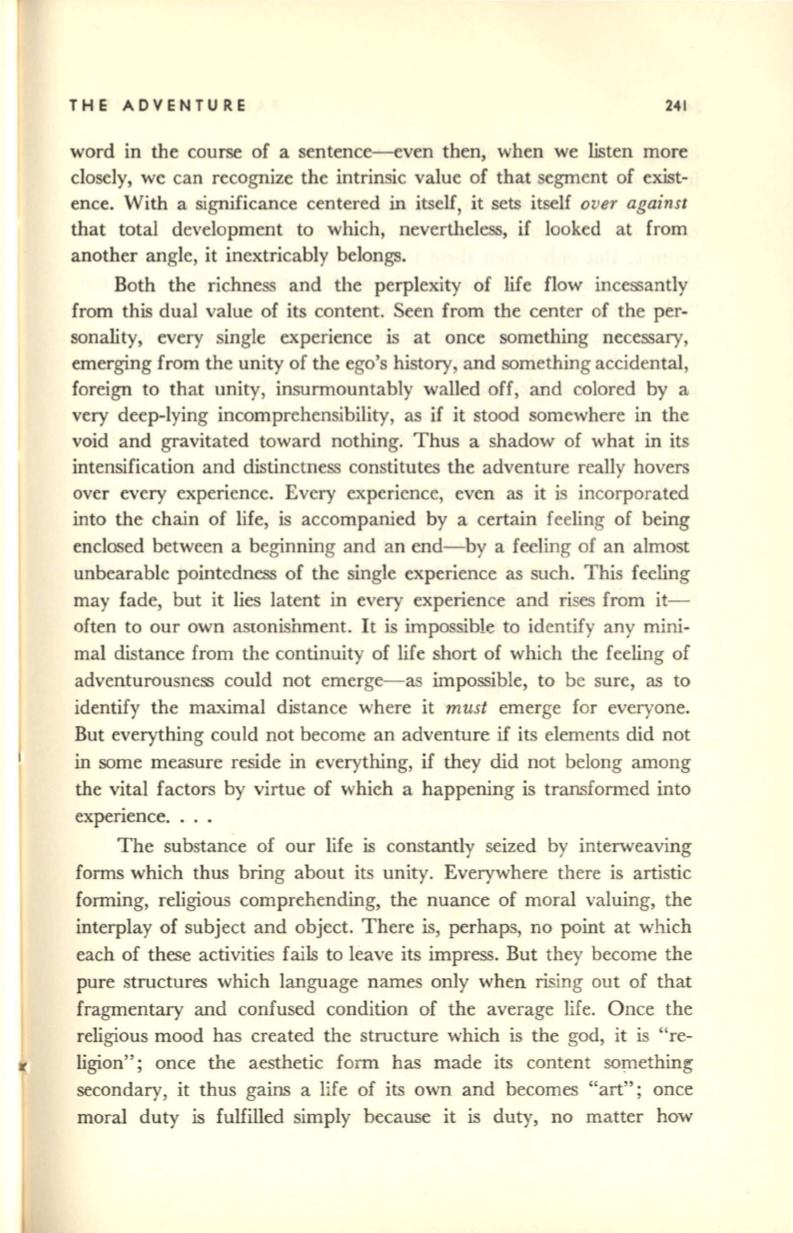
THE ADVENTURE
241
word in the course of a sentence-even then, when we listen more
closely, we can recognize the intrinsic value of that segment of exist–
ence. With a significance centered in itself, it sets itself
over against
that total development to which, nevertheless, if looked at from
another angle, it inextricably belongs.
Both the richness and the perplexity of life flow incessantly
from this dual value of its content. Seen from the center of the per–
sonality, every single experience is at once something necessary,
emerging from the unity of the ego's history, and something accidental,
foreign to that unity, insurmountably walled off, and colored by a
very deep-lying incomprehensibility, as if it stood somewhere in the
void and gravitated toward nothing. Thus a shadow of what in its
intensification and distinctness constitutes the adventure really hovers
over every experience. Every experience, even as it is incorporated
into the chain of life, is accompanied by a certain feeling of being
enclosed between a beginning and an end-by a feeling of an almost
unbearable pointedness of the single experience as such. This feeling
may fade, but it lies latent in every experience and rises from it–
often to our own asronisnment.
It
is impossible to identify any mini–
mal distance from the continuity of life short of which the feeling of
adventurousness could not emerge-as impossible, to be sure, as to
identify the maximal distance where it
must
emerge for everyone.
But everything could not become an adventure if its elements did not
in some measure reside in everything, if they did not belong among
the vital factors by virtue of which a happening is transformed into
experience. . . .
The substance of our life is constantly seized by interweaving
forms which thus bring about its unity. Everywhere there is artistic
forming, religious comprehending, the nuance of moral valuing, the
interplay of subject and object. There is, perhaps, no point at which
each of these activities fails to leave its impress. But they become the
pure structures which language names only when rising out of that
fragmentary and confused condition of the average life. Once the
religious mood has created the structure which is the god, it is "re–
ligion"; once the aesthetic form has made its content something
secondary, it thus gains a life of its own and becomes "art"; once
moral duty is fulfilled simply because it is duty, no matter how


